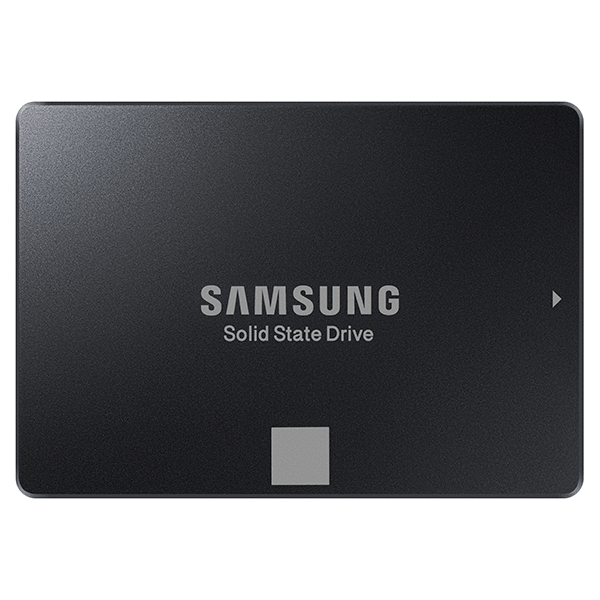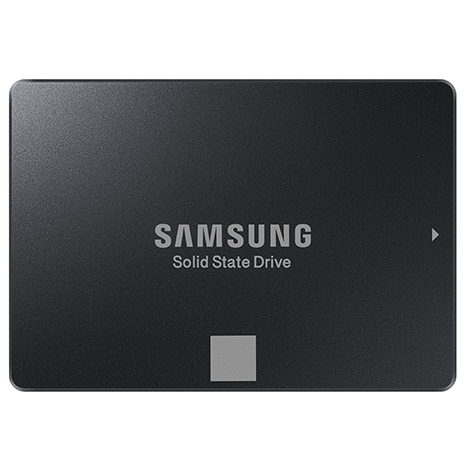Early Verdict
Samsung takes aim at the new low-cost entry-level SSD market with another mainstream SSD that rips the competition to shreds. You will still have to pay a little more to get the best, but the small "Samsung Tax" is worth the premium. The 750 EVO offers almost identical performance to the 850 EVO as long as you keep the workloads simple.
Pros
- +
Mainstream performance
- +
Samsung quality
- +
High endurance
- +
Competitive pricing
- +
High native TLC sequential write performance
- +
Best-in-class random performance
- +
Excellent software package
Cons
- -
No 1TB capacity
- -
Priced higher than entry-level competition
- -
Average notebook battery life
- -
Low mixed sequential workload performance
Why you can trust Tom's Hardware
Specifications And Features
The Samsung SSD 750 EVO series began its life in Japan as a low-cost product aimed at system integrators (SI) and OEMs. The initial release was limited to the 120GB and 250GB capacities we reviewed, but Samsung recently made several changes to the series, including opening it up to the retail market. The SI and OEM focus remained when Samsung extended the 750 to worldwide distribution, but we think it was a way for the company to test the waters. The SSD 750 is now a full retail release with drives selling at Newegg, Amazon and possibly retail brick and mortar stores. Samsung also added the new 500GB model, which offers up to 98,000/88,000 random read/write IOPS and up to 540/520 MB/s of sequential throughput.
Low-cost planar 3-bit per cell (TLC) flash from Micron and Toshiba is responsible for a slew of new entry-level SSDs that sell for remarkably low prices. Recently only one 1TB-class SSD sold below $200, but at the time of writing, we managed to find five 1TB-class products for as low as $197.00. The new entry-level prices are great for shoppers, but it hurt the 850 EVO's market position.
Samsung used the 850 EVO to combat entry-level SSDs by lowering its price just enough to make customers pay a little more to gain superior performance and features. The strategy has worked, but competitors are pricing entry-level planar TLC SSDs too low for Samsung to continue following the price curve. The 850 EVO 500GB came to market at $269.99, but now it routinely sells for $149.99 to compete with 512GB-class SSDs that retail for $124.99.
3D V-NAND is still expensive to manufacture compared to Toshiba's 15nm TLC and Micron's 16nm TLC, but Samsung is also armed with its own mature low-cost planar 16nm TLC flash. The Samsung SSD 750 gives the company a way to compete in the entry-level market, and it does not compete directly with the 850 EVO, which came to market as a mainstream SSD.
Although Samsung hasn't commented on an eventual 1TB or 2TB 750 Evo release, it only makes sense for the company to continue the evolution of the series. A 1TB SSD 750 makes more sense than a 2TB product right now, but Samsung may continue to chase the entry-level market in Q3 when Phison brings low-cost 2TB SSDs to market.
Looking forward, we suspect Samsung will slowly increase the SSD 850 EVO's price, and we're already monitoring the pricing because the series has gone on sale less frequently. Samsung has also begun shipping some 850 EVO products with its new 256Gbit 48-layer flash. If the new 48-layer yields were as good as Samsung expected, we would likely see more of these V2 850 EVO drives in the wild, but that isn't the case yet. We will know more when we sit down with Samsung in South Korea in a few months to discuss the current state of 48-layer production and possible upcoming products, such as the 850 EVO 2TB in mSATA and M.2 form factors.
Technical Specifications
The new SSD 750 EVO 500GB joins the existing 250GB and 120GB products in the series. All three SSDs use the same 2-core MGX controller, 512MB DDR3 buffer memory and 16nm planar MLC flash.
Get Tom's Hardware's best news and in-depth reviews, straight to your inbox.
Most of the performance specifications remain the same for all three products with only a slight variation in high queue depth random reads. The SSD 750 is the only entry-level SSD to deliver 10,000 random read IOPS at queue depth 1. Most users will never utilize all 10,000 IOPS, but the capability equates to very low latency during random read requests.
Except for the limited endurance rating of the 750 EVO's planar TLC flash, it is very similar to the mainstream 850 EVO. The SSD 750 really does change the way we look at entry-level SSDs, and it has the potential to hurt smaller SSD manufacturers.
Pricing, Warranty And Accessories
Samsung has not been aggressive with SSD 750 EVO pricing, and the company might increase the 850 EVO's price even more as other products slide up the scale. Some large online resellers are even selling the smaller 750 EVO products for more than the initial MSRP. The 500GB model debuted at $149.99, and it remains at that price.
The 750 series ships with a 3-year warranty, which is one year more than some other entry-level SSD products. The warranty has a limited 100 total bytes written (TBW) endurance stipulation for the 500GB drive we're testing, which is only slightly less than the 850 EVO 500GB.
The SSD 750 EVO accessory package is limited; the retail package includes a drive with a paper manual. However, users gain access to the Samsung Magician and data migration software that ranks as one of the best available today. The 750 EVO also supports Rapid Mode, a system DRAM cache that absorbs disk writes to increase performance and endurance.
A Closer Look
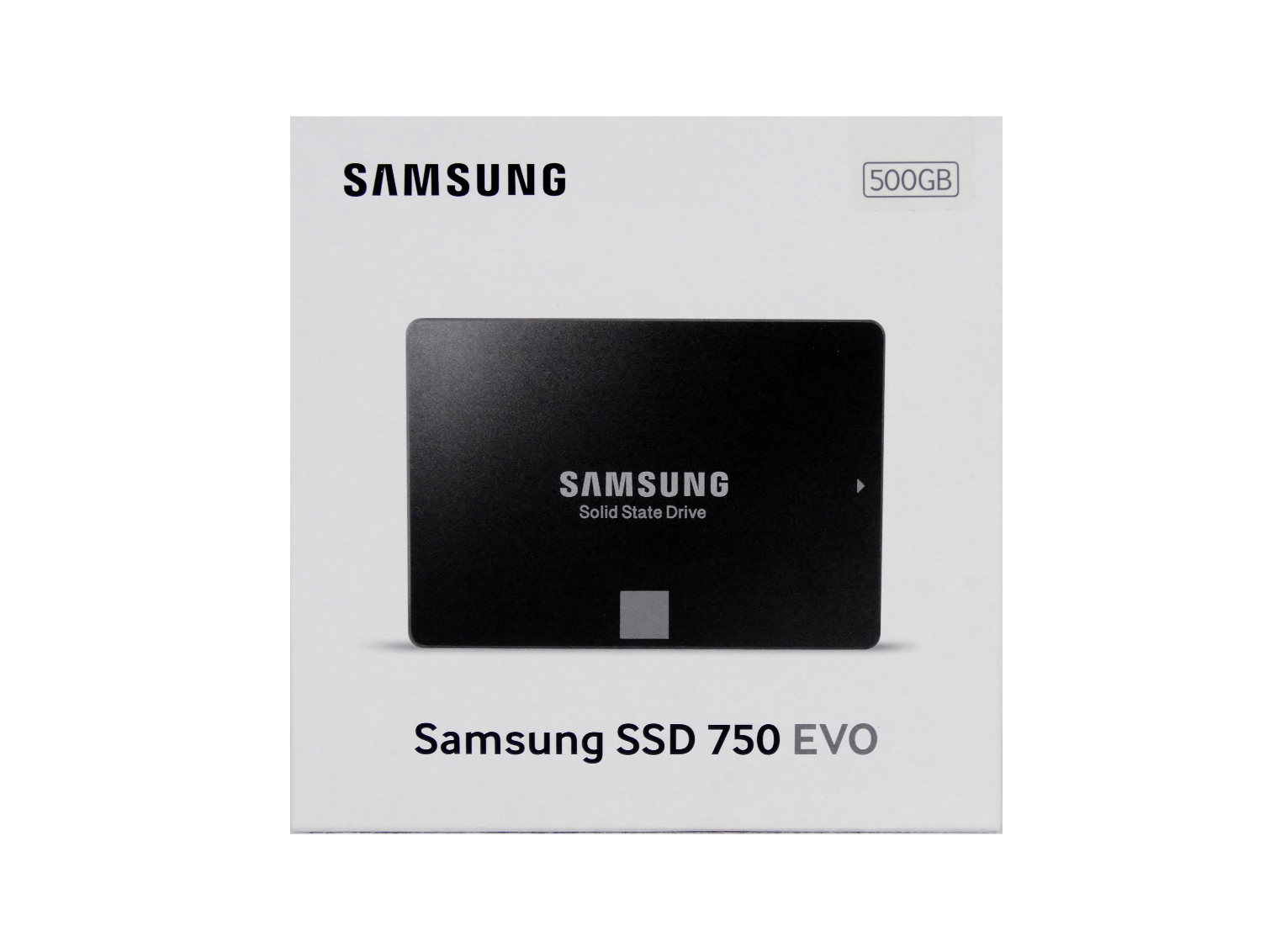
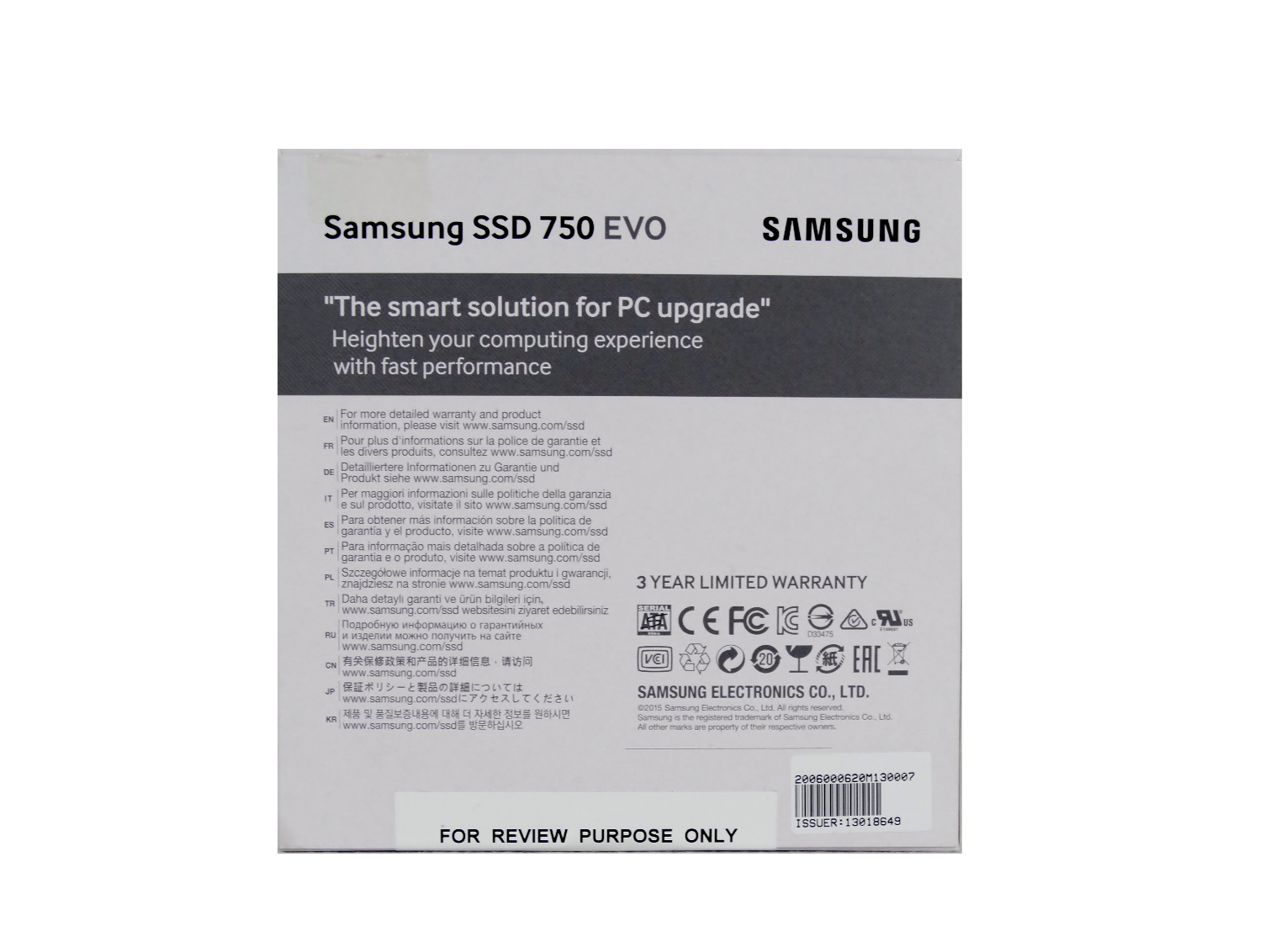
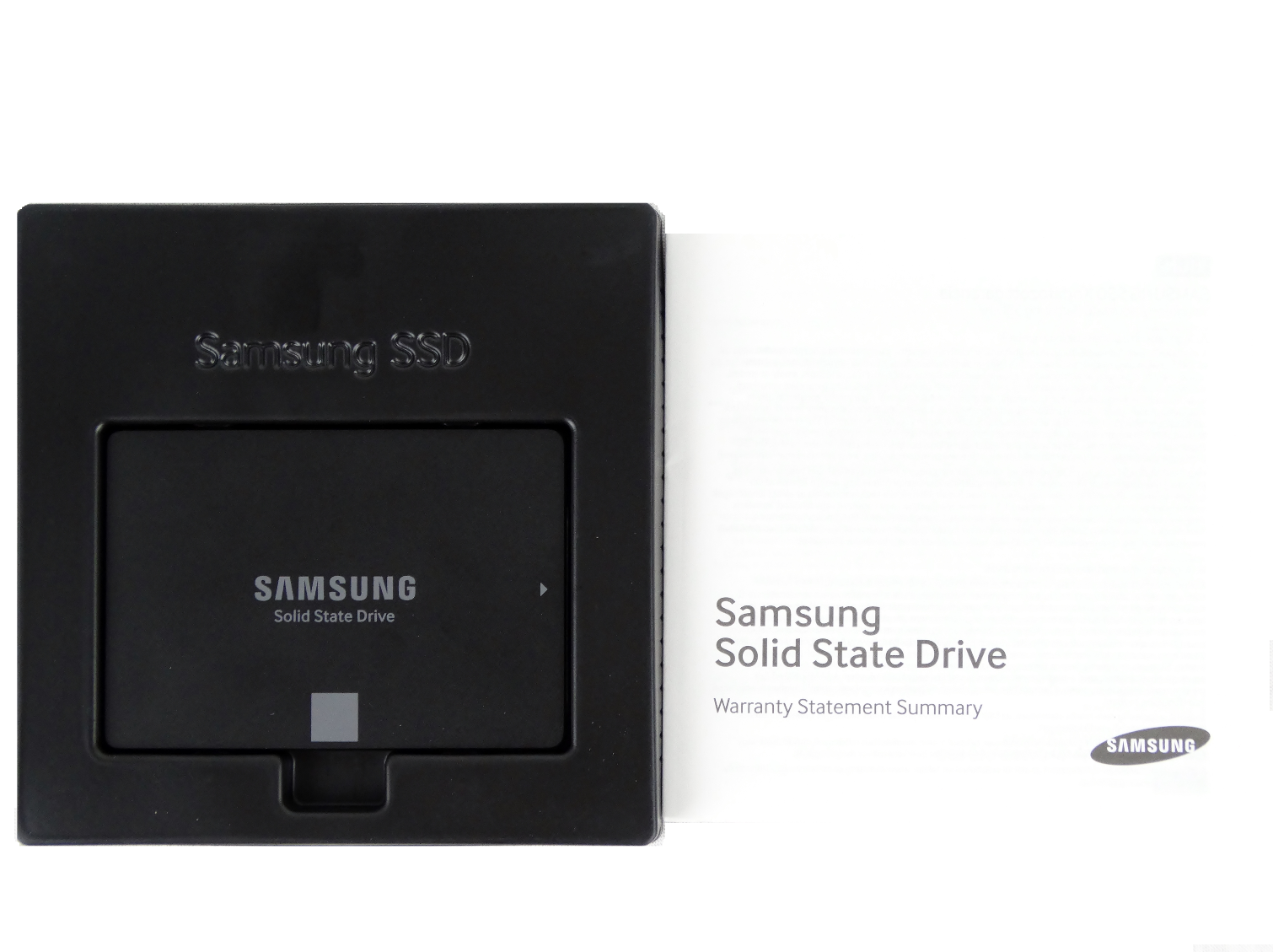
The white package for the SSD 750 EVO is not as flashy as Samsung's other retail SSD products. We didn't find any performance claims on the package, but Samsung labels the warranty clearly and directs retail shoppers to a website for more information. "The smart solution for PC upgrade" quote on the back of the package makes it very clear that this Samsung has shifted from targeting the series at new builds for system integrators. We found the 2.5" drive and warranty statement inside the package.
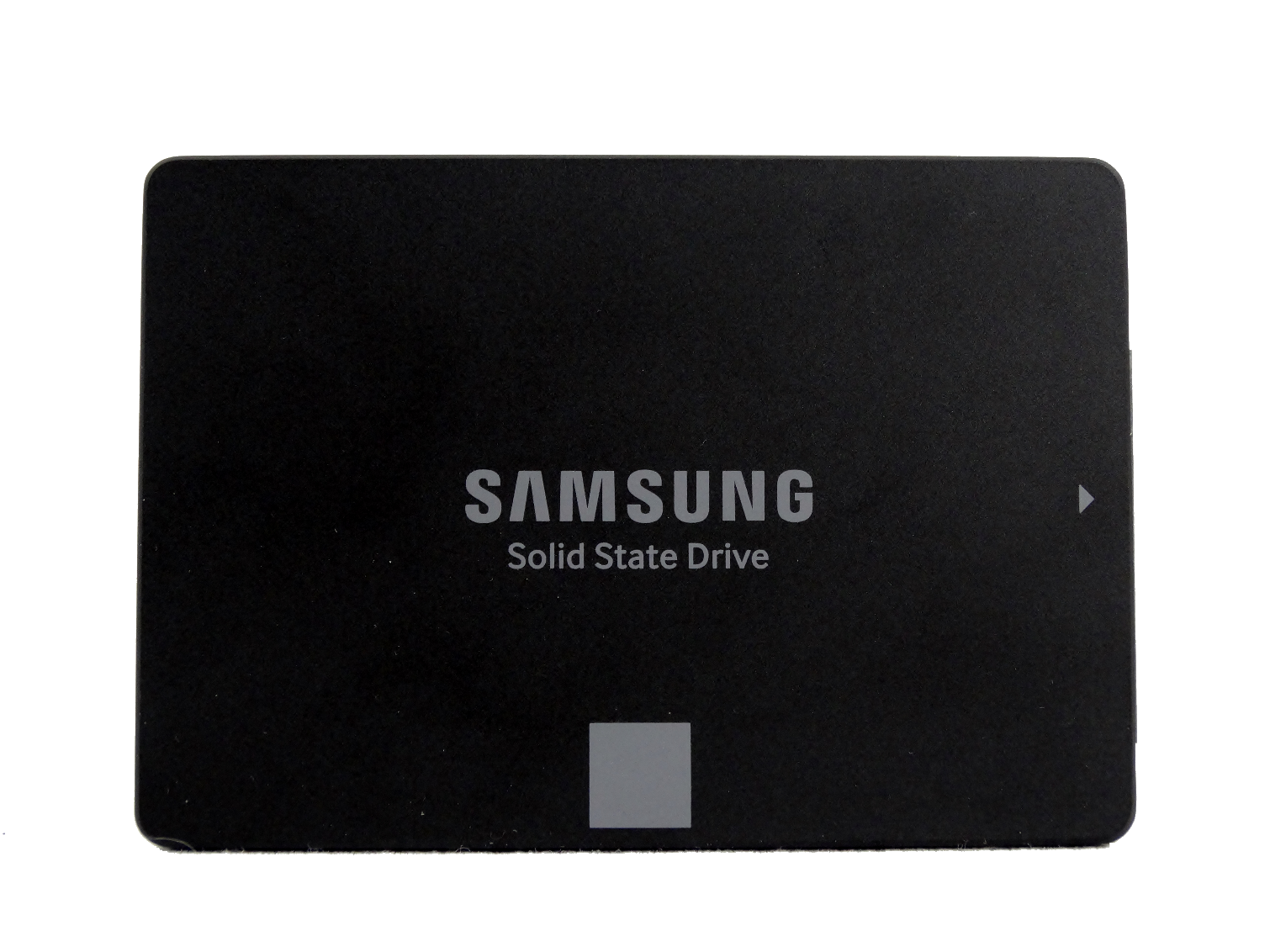
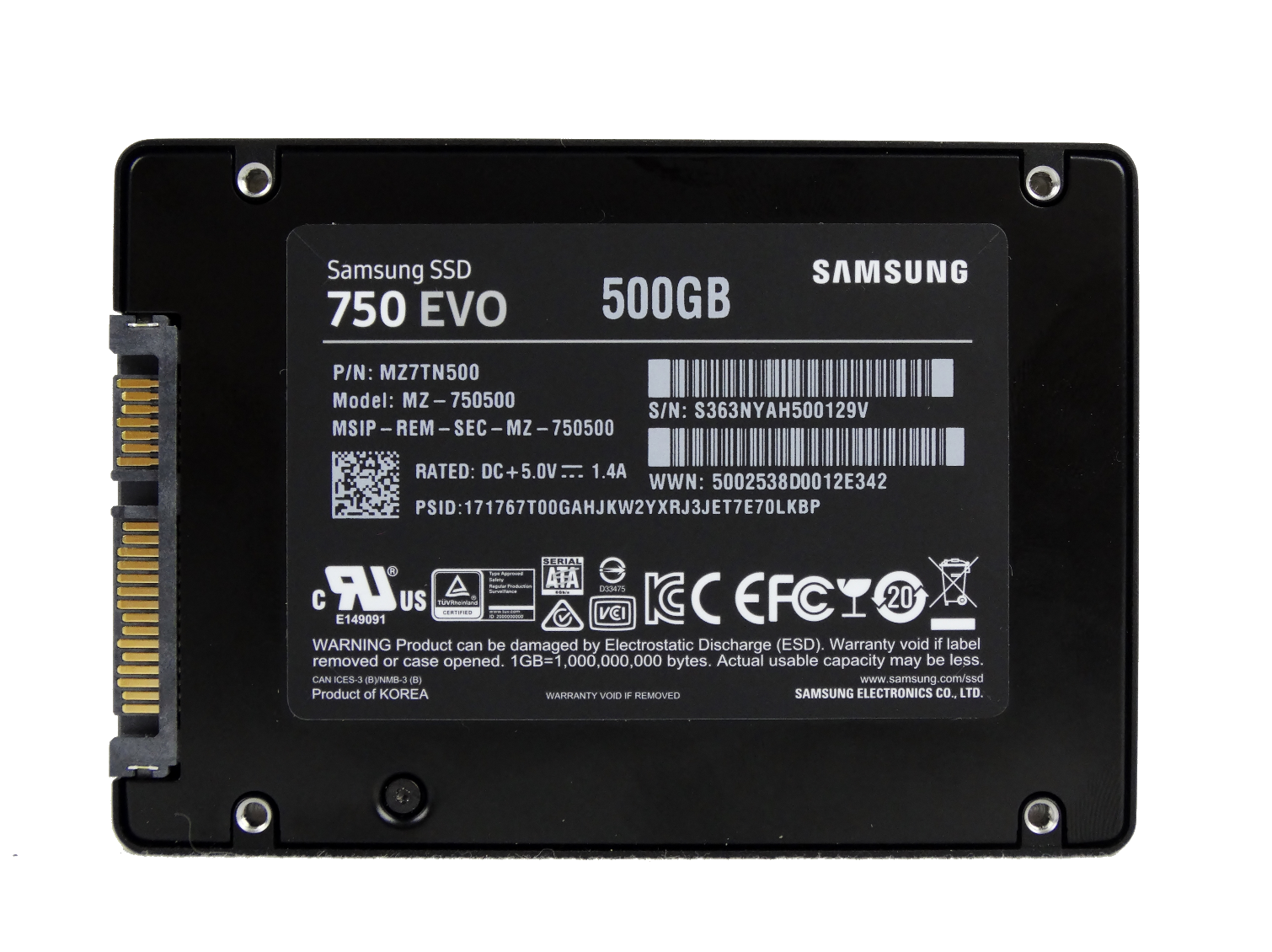
The drive itself is standard fare; the design is similar to the 850 series and older retail SSDs from Samsung. The chassis has a 7mm Z-height, like nearly all other SSDs sold today, so it fits well in systems that require the slim design.
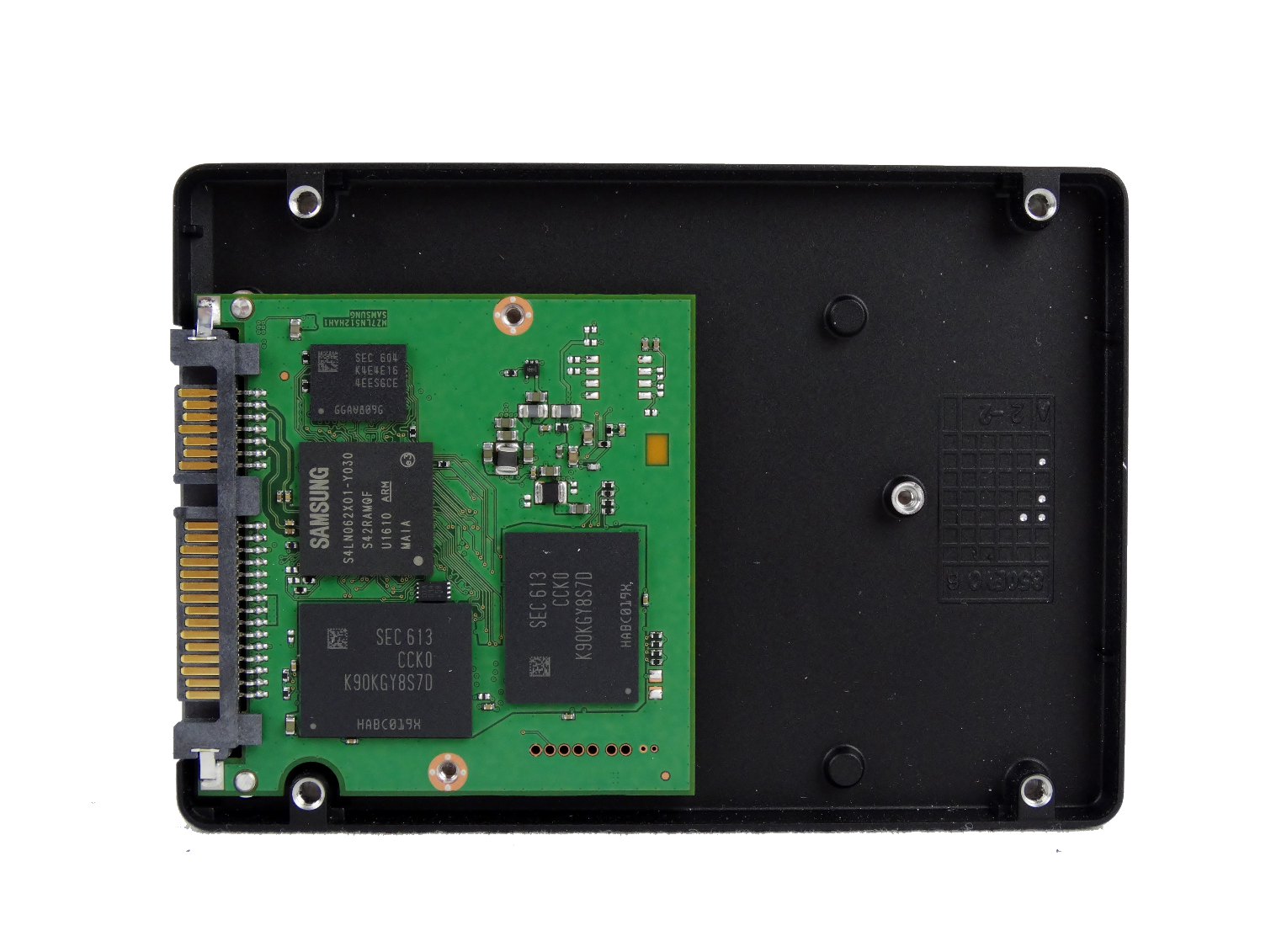
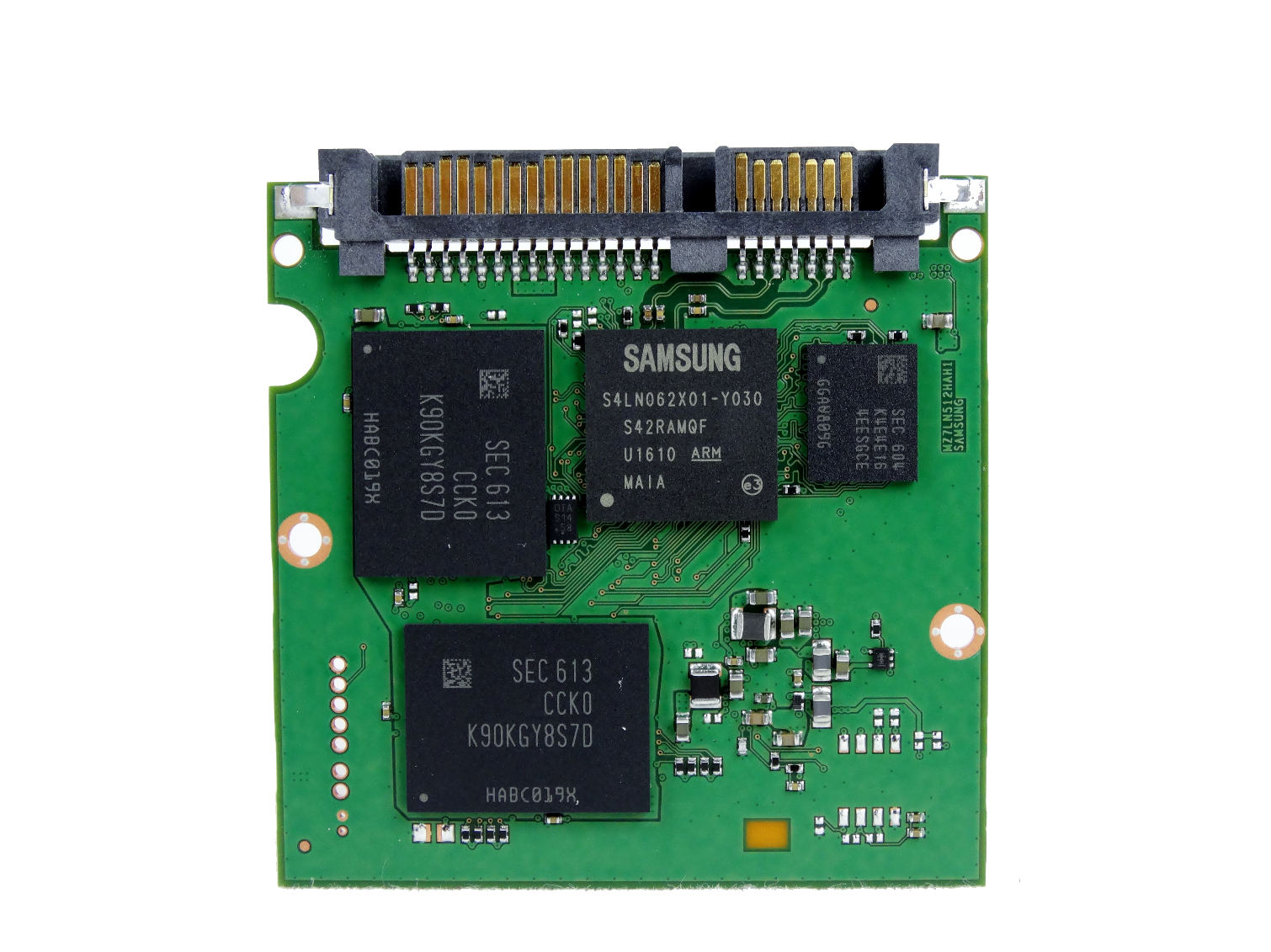
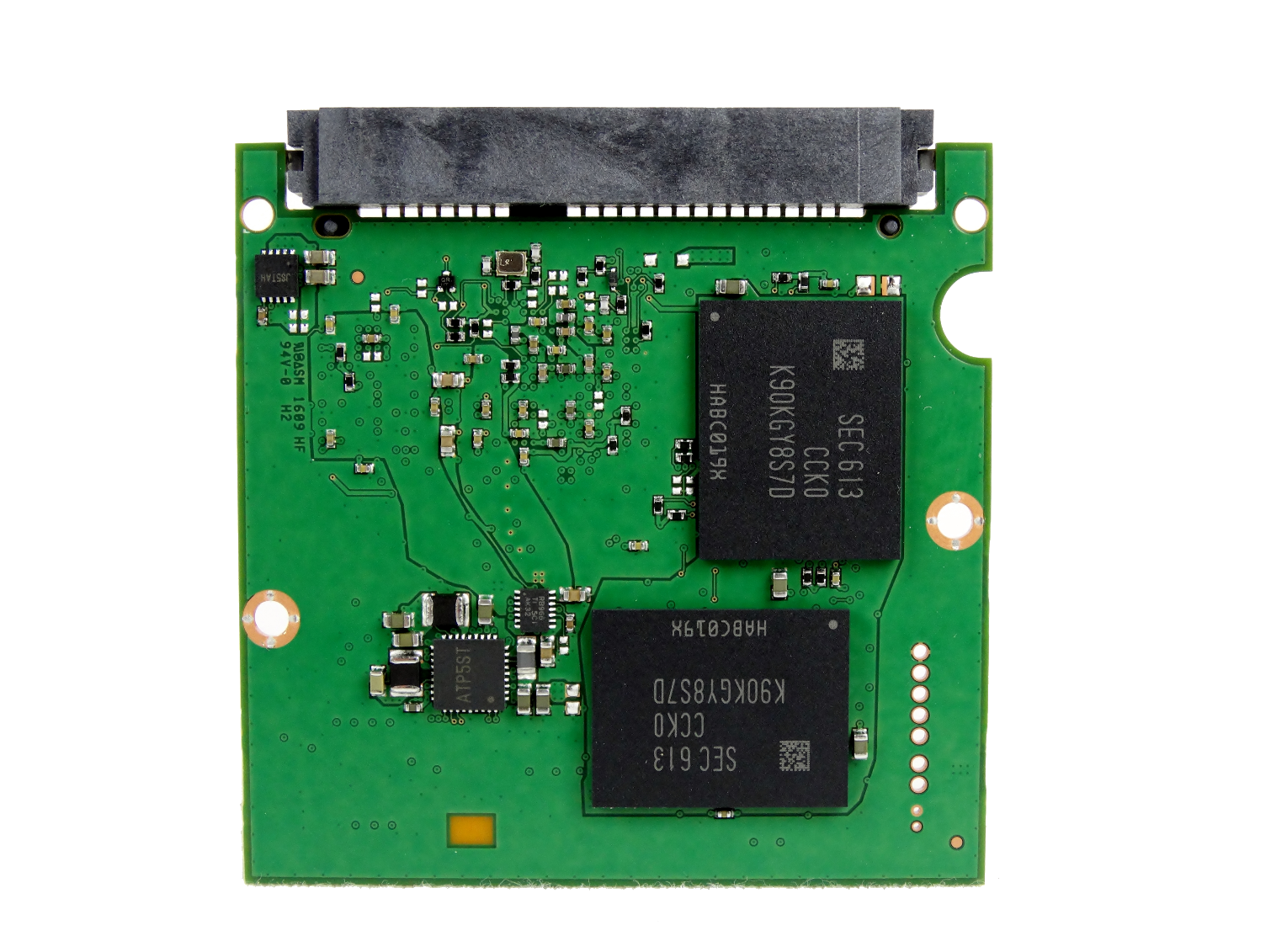
Samsung designed the small printed circuit board to reduce manufacturing costs and maximize revenue. The MGX controller is a mature component that Samsung has used for several generations now, and the 500GB model includes a 512MB DDR3 package. The 120GB and 250GB 750 EVO products did not have a dedicated DRAM package, even though Samsung still claimed a 256MB buffer. Samsung stated that the smaller products moved the DRAM package into the MGX controller itself, which is the type of customization enabled by complete vertical integration. Samsung manufactures all of the components inside the SSD 750 EVO.
MORE: Best SSDs
MORE: How We Test HDDs And SSDs
MORE: All Storage Content

Chris Ramseyer was a senior contributing editor for Tom's Hardware. He tested and reviewed consumer storage.
-
Dark Lord of Tech Bought the 120GB one for a boot drive a couple of months ago , very good performance , well done Samsung.Reply -
hardrock152 Honest (and possibly stupid) question:Reply
The 500 gB version of this costs essentially the same as the 500 gB 850 EVO on amazon. Isn't the 850 Evo a better product, or am I missing something internally (does the TLC flash have some benefit over the 850 EVO)?
Sorry if this is dumb, just kind of curious. -
lucas_7_94 Reply18331527 said:Honest (and possibly stupid) question:
The 500 gB version of this costs essentially the same as the 500 gB 850 EVO on amazon. Isn't the 850 Evo a better product, or am I missing something internally (does the TLC flash have some benefit over the 850 EVO)?
Sorry if this is dumb, just kind of curious.
In a fast view, the only -big- difference i can see is the warranty. 5 years from 850 vs 3 years from 750.
-
jossrik I don't see 170$ for an entry lvl SSD being competetive, if money is an issue, you're going to go with the 100$ 500Gb class SSD over a spinning drive. It's not like there's a fire sale on the 500Gb drives, there are several that are in the 100$ range on the Egg right now, and I just bought a 1TB off the egg with a promo code that cost me 185. Is it a Sammy? No, but will the end user know the difference between it and the Samsung 500Gb? Nope. They will notice the extra 500Gb though. SSDs are reliable enough that under normal use we expect them to last the duration of their warranties and then some, to the point where we don't really worry about Tbs written.Reply -
chalabam It is clearly bottlenecked by SATA.Reply
And since I have no reason to upgrade my mother, the only way that SATA SSD can offer better performance to me is to add multiple SATA cables, and a special driver, to emulate RAID0 with a single drive, or something. -
DynamoNED Priced a little lower, I think the 750 EVO could solidify Samsung's dominance (not necessarily a good thing, BTW). At this price, it's just not worth it over the 850 EVO.Reply -
AndrewJacksonZA Reply
I just paid +-USD112 for a 500GB Samsung 750 EVO yesterday. It's going to replace my 120GB Seagate SSD. Where did you get the price of USD170 from jossrik?18333765 said:I don't see 170$ for an entry lvl SSD being competetive
Yeah, I'm aiming for at least 5 years worth of use out of this drive, hopefully much more. To that end I think I'll only use the first 400GB, maybe 420GB of this drive, I'll try and keep the rest unused. However, this is just me. Does anyone know if now using all of the drive actually increases it's lifespan? I would imagine so since the wear-levelling algorithms have "more" spare space (the unallocated space.) However, wear-levelling algorithms aren't my area of speciality, so I'm just making educated guesses.18333765 said:SSDs are reliable enough that under normal use we expect them to last the duration of their warranties and then some, to the point where we don't really worry about Tbs written.
Can anyone clear this up for me please? -
Onus I just pulled a 250GB Samsung 830 from a system that had become quite balky and was experiencing some data corruption. While not heavily-used the last few years, the drive is probably at least six years old; I'll say I got my money's worth.Reply -
AndrewJacksonZA Thank you Onus, but it can't be that old, Onus! SSDs were first released only a few years ago!Reply
...
Hmmm... a review on 2011/09/24?! 2011?!?!
My, my... It's said that a day might be long but a year is a very short space of time. Do we really appreciate the weight of that statement?
